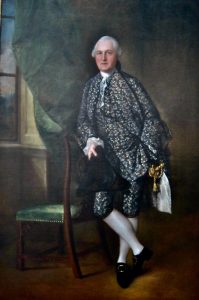 HIGH SOCIETY
HIGH SOCIETY
In the European context, the traditions of the Fine Arts were the domain and playgrounds of the royal houses and rich aristocrats.
Many patrons of the visual art were wealthy general of industry. They started major corporate collections, in the buildings of their headquarters.
Today, the arenas of the visual arts are dominated by super-rich collectors and philanthropists, who supports non-profit arts and cultural organisations to promote a variety of activities for social well-being and humanitarian cohesion.
Elite groups may own and control the global activities of the visual arts, but this fact and not being on the rich list, are no barriers to full access, engagement, enjoyment and appreciation of what the Fine Arts has to offer.
Modern museums and art galleries welcome visitors from all backgrounds into their exhibitions and art educational spaces. It is certainly not all about money, as a growing number of people presumes.
However, to manage, maintain and sustain the work and activities of a public art space, does require huge amounts of money. Where are the income generation opportunities centred, when the organisations are structured with a not for profit ethos? Usually, in the majority of cases, through the generous donations of rich patrons and benefactors.

AFRICAN COMMUNITIES
Throughout Africa, the traditions of the Creative Arts, contains many similarities with their European counterparts. Those responsible for the creation and protection of the created objects, are distinctive groups of people in particular associations, or the work of custodians remain within highly regarded families.
The skills and techniques of making among artists, artisans and crafts people, are handed down through generational family members, who become the present keepers and makers of art objects. Their meaning relates and connects deeply with the soul of the nations and the ancestors, whom many art makers believe are still among us.
The creative arts in Africa were generally utilised for the benefits of communities in their locale. They were and many are still in the traditional mode, presented through symbolic rituals, ceremonies, festivals, state occasions, marriages etc.

Status & Class
When we compare and contrast African and the European arts traditions, the big Euro differences are the elite status symbols, and financial wealth as a benchmark for artistic taste. Including the attitudes displayed among some people in the higher echelons of the prevailing class structures.
As a practicing artist participating in the one world realities, my initial intentions while working, and what my completed art works contains and communicates, will be evaluated by independent curators, the viewing audiences and interested collectors.
I am happy if art lovers continue to be interested in my creative works. The New Photo-Arts I am doing currently, have not yet caught the attention of the commercial art galleries and dealers. I intend to find out soon, if my work will be accepted with a number of planned exhibitions in 2024. Many examples are on this website.